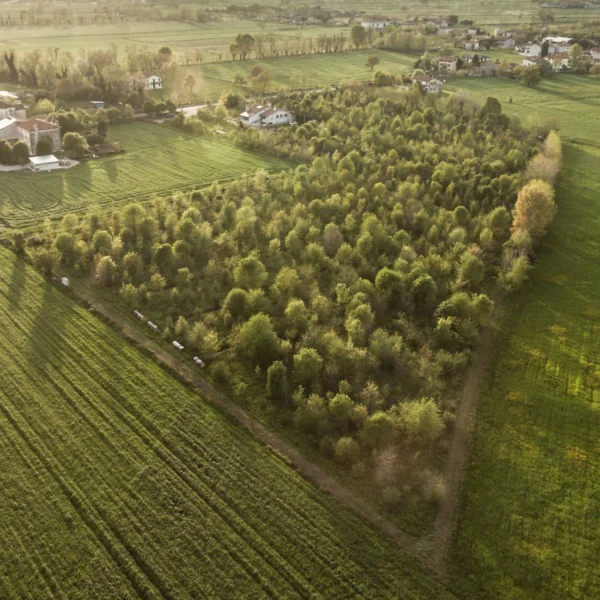
Adopt or gift an European hop-hornbeam
Determined people
It grows wild in the Italian Veneto region, especially in the hilly and piedmont area. It grows in poor, even steep and stony soils.
Features
Scientific name: Ostrya carpinifolia
Common name: European hop-hornbeam
The European hop-hornbeam belongs to the Betulaceae family, not the same as the white hornbeam. Its trunk grows straight and an elongated, collected crown starts from there. It can reach 15 meters in height. The bright green leaves have an oval shape and a serrated edge. To distinguish European hop-hornbeam from white hornbeam, the fruits are key. These are very light green achenes, collected in clusters. We often encounter this species in oak and turkey oak forests, being a Mediterranean-mountain species. It prefers dry and sunny soils of calcareous slopes, up to 1200 m. It is a pioneer plant, that is, it is able to grow on difficult soils resulting from fires, landslides and deforestation. In doing so, it prepares the ground for more demanding trees and jump-starts reforestation.
Fun facts
Its scientific name comes from the Greek word ‘ostrya,’ meaning oyster. It refers to the shape of the inflorescences that enclose the seeds, as in a shell.
Properties and Uses
It endures air pollution, which is why we also encounter it in city hedges. It is easy to maintain, as it tolerates disease and external attacks.
Why adopt or gift an European hop-hornbeam: what makes it unique
of CO2 captured over a year
reachable height
maximum life expectancy
Forests where you can grow your own European hop-hornbeam, adopting it or giving it as a gift.

Bosco Limite
 Italia
Italia
Bosco Limite Lakes
 Italia
Italia
Join our community
Do you like trivia about trees and forests, and want to know how you can help create a greener future and help nature?
Sign up for our newsletter!
A couple of times a month you will receive news, scientific insights without catastrophizing, offers to adopt our trees, and news from our projects. With WOWnature, helping the planet becomes a positive experience. Every tree is a step toward a better future.


